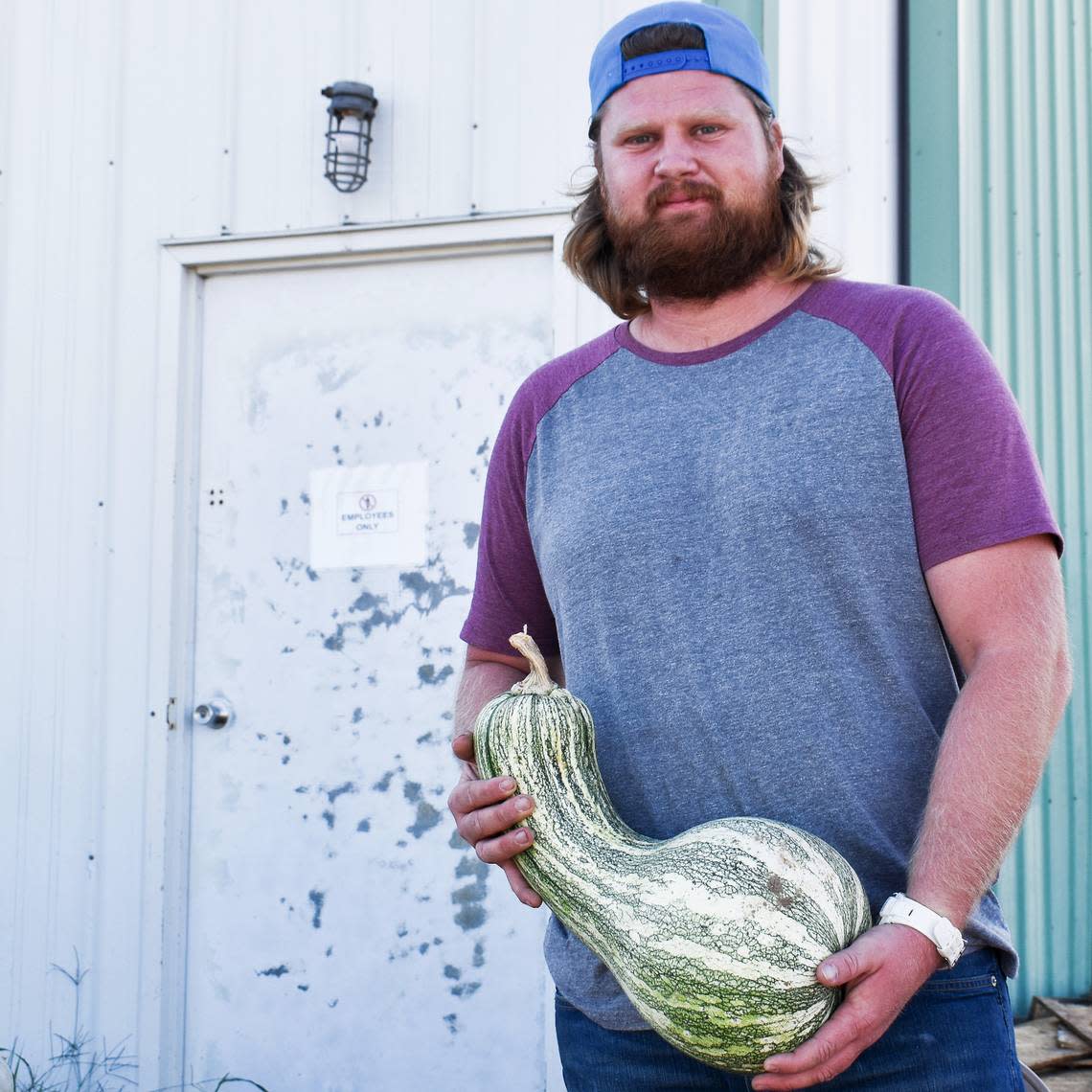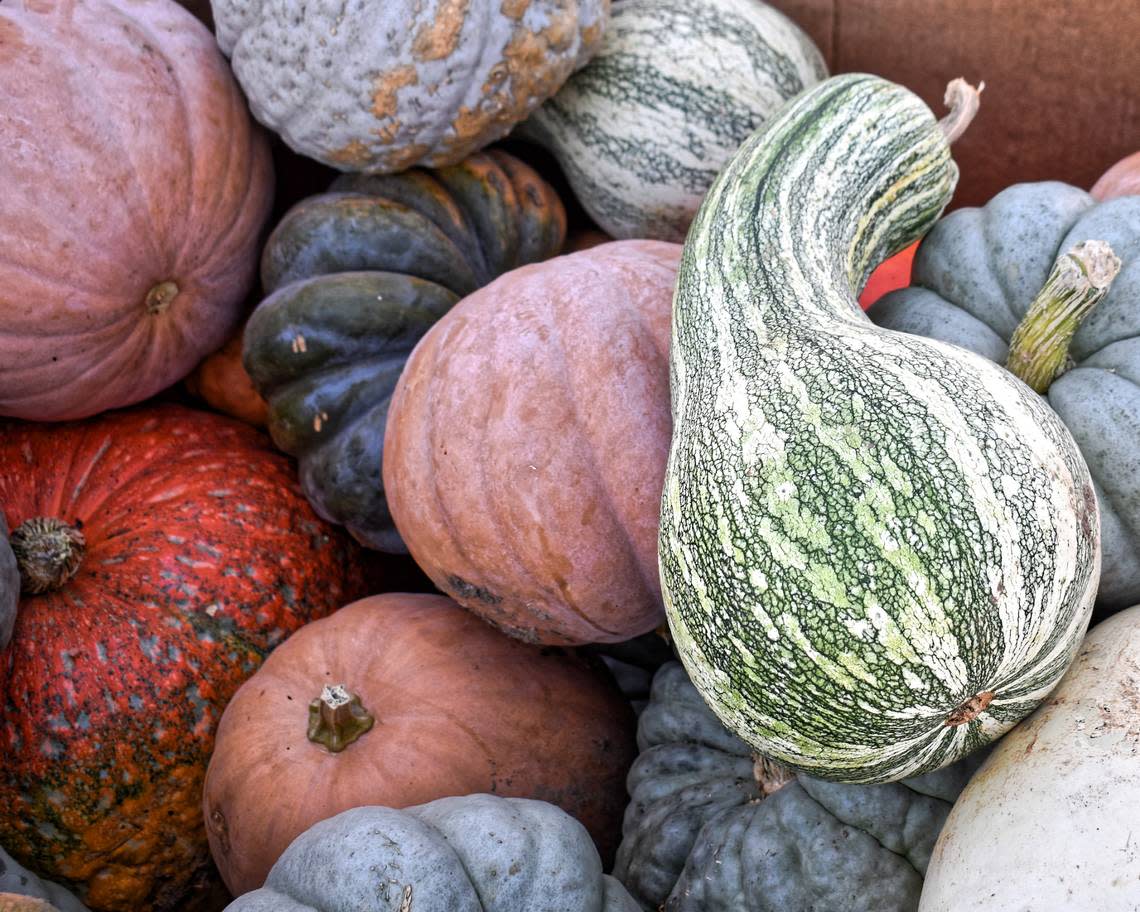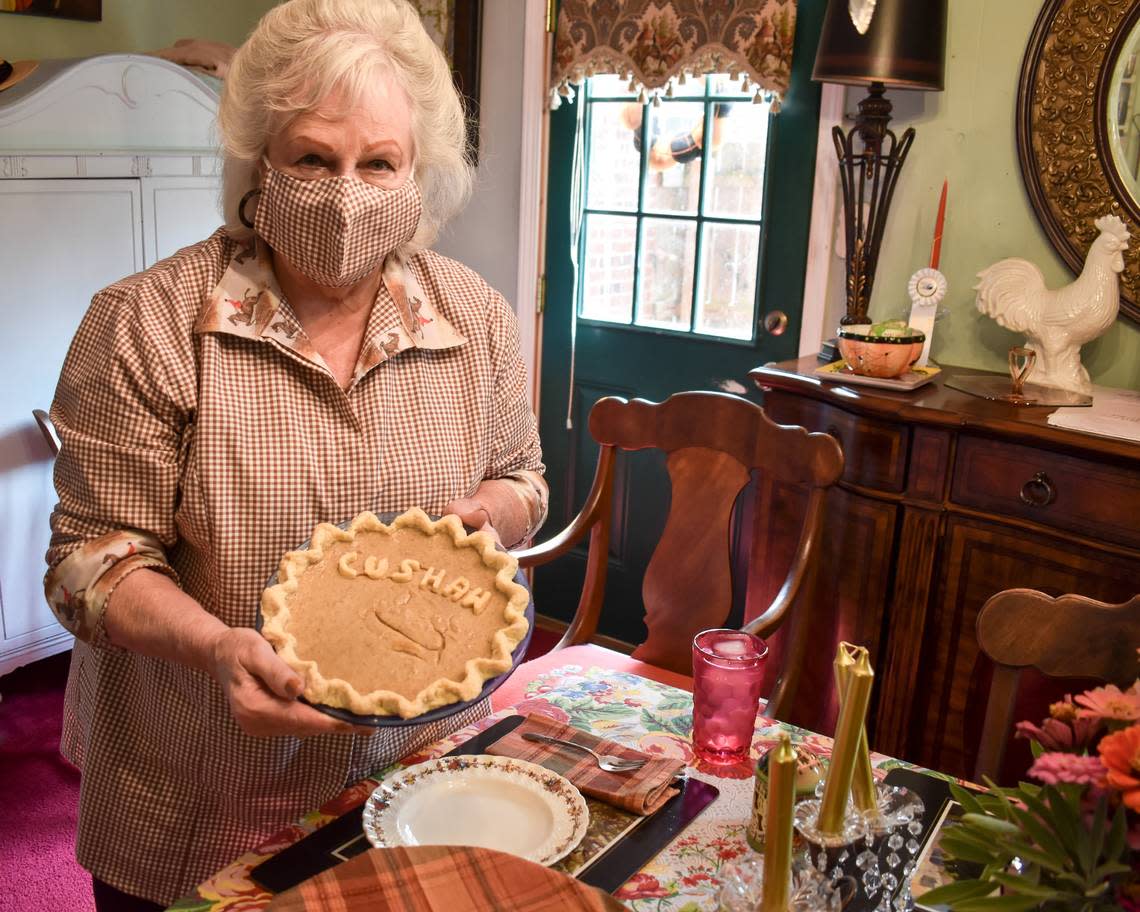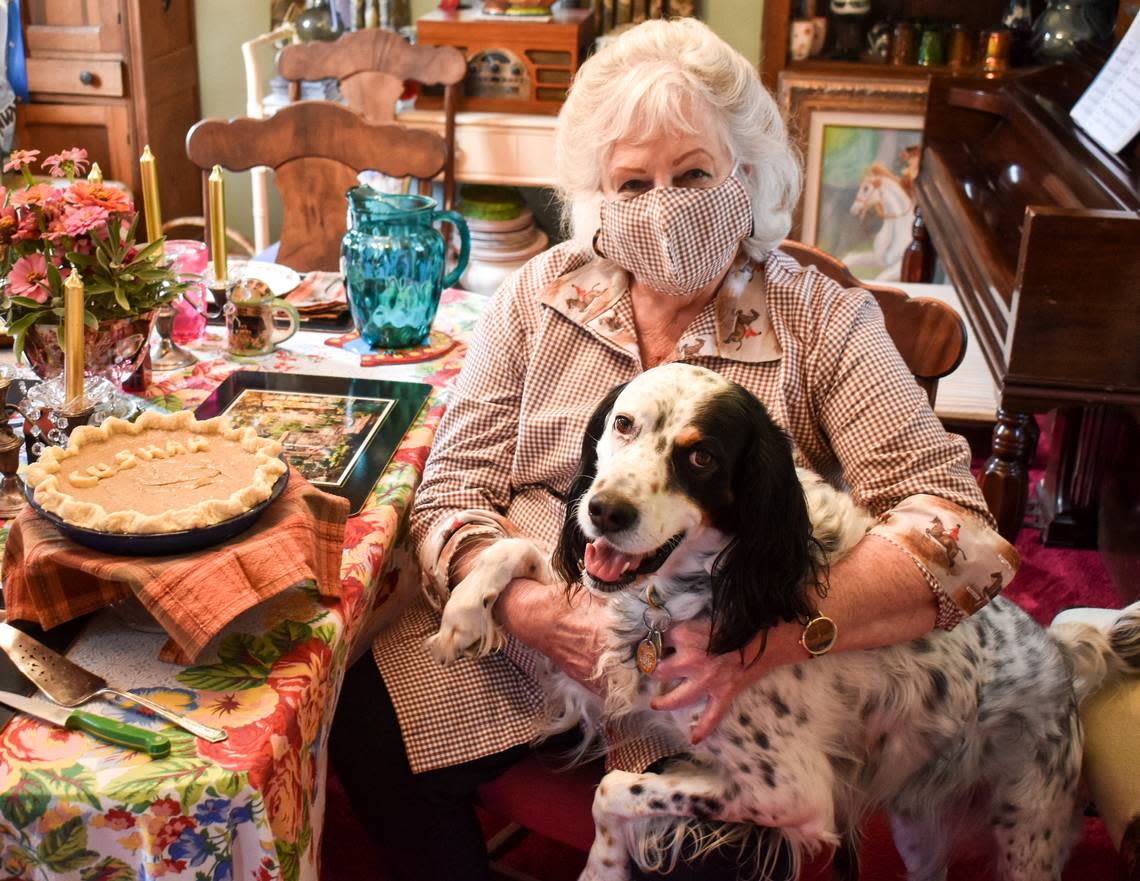Looking for a better pumpkin pie? Try cushaw squash instead for a unique, light flavor
When Beckham Sharpe and his family switched from raising tobacco to growing produce on their Kentucky farm more than a decade ago, they did a brisk business each fall in pumpkins and giant crookneck squashes called cushaws, which many people used as seasonal decorations on their yards and porches.
But as Sharpe soon realized, some of his customers — in particular those “from the older generation, anywhere from 75 to 90 years old,” he says while filling orders for half-bushel boxes of fruit and vegetables at the farm — weren’t buying cushaws just for show.
They were buying them to eat, especially as the main ingredient in casseroles and pies this time of year.
“They put brown sugar and butter and cinnamon on them,” Sharpe says. “I have a great-aunt who does that for us every year.”
The older generation, it turns out, is the keeper of wisdom about the old-timey Kentucky delicacy known as the cushaw, which, when stewed or baked and puréed, has a color and texture similar to (but lighter than) pumpkins.

“Cushaws were the only squash most Kentucky farmers bothered to plant when I was a child a hundred years ago,” jokes Lexington’s Georgia Green Stamper, who grew up on a farm in Owen County and is the author of the essay collection Butter in the Morning: Pieces of a Kentucky Life. “My mother — and most country cooks in my experience — removed the rind and gently stewed the innards. Mother then drained it, and removed the mushy cooked consistency to a casserole dish and covered it liberally with sugar and butter, cinnamon, etc., and baked it until bubbly, slightly brown on top.”
While not as familiar on holiday tables as they once were, cushaws are still grown and consumed on Kentucky farms and remain available at farmers’ markets and some grocery stores each autumn and early winter.

At Dyer Farm in Sharpsburg, Kentucky, for example, Laura and Sid Dyer sometimes plant cushaws in between rows of corn. “It saves field space, and the corn shades them so they don’t get burnt,” says Laura Dyer, who sells cushaws at farmers’ markets in Lexington. “I like to put grated cushaw into my cake batter, which makes the cake moist.”
Cushaws make their biggest impression, perhaps, in a pie.

Baking Cushaw Pie
“It’s like pumpkin pie, but better,” says Lexington cookbook author Barbara Harper-Bach, 82, whose “The Pure Kentucky Pie Clinic” features a recipe for cushaw pie. “In the 1970s when I was raising kids, somebody brought me a cushaw and I thought, what the heck is that? I had to go to the library to research it. I got the pie made and told my kids it was a pumpkin pie, because I didn’t think they’d eat anything called cushaw. And they said it was the best pumpkin pie they ever ate. And that’s exactly why we’re still making it today.”
To make the pie, Harper-Bach scrubbed a medium yellow cushaw from Sharpe’s farm — at his suggestion, I selected the 12-pound cushaw with a thicker neck, which is where most of the flesh is — with a vegetable brush. Keeping the rind, she cut the cushaw into large chunks, scooped out the seeds (which can be kept and replanted next season) and then roasted the cushaw “meat,” as she calls it, with a splash of olive oil on a sheet pan for about 90 minutes at 350 degrees.
Then she scooped out the soft flesh directly into a food processor, puréed it, then pressed it into a metal sieve to drain. It released a surprising amount of moisture into a bowl in the refrigerator overnight — so much moisture that she had to empty the bowl twice.

“The secret to making the purée is that you’ve got to strain it overnight,” Harper-Bach says. “There’s tons of water in it, so if you don’t strain it, your pie’s going to be watery. I Googled a ton of cushaw pie recipes, and none of them mentioned straining them overnight. If you didn’t do that, you wouldn’t have the concentrated taste you’re looking for.”
The process of making a good cushaw pie from scratch is time-consuming, she admits. “Any time you cook from scratch, it’s a little more time-consuming than if you just buy it in a can or whatever,” she says. “But I have tried to educate people for years to cook from scratch because it saves so much money and the results are so much better. And the proof is in the pudding.”
And so it was. Harper-Bach’s cushaw pie, slightly modified from her “Pure Kentucky Pie Clinic” recipe — she used half-and-half instead of heavy cream and cut the amount of white sugar in half — was far less dense and somewhat sweeter than traditional pumpkin pie. The custard filling was a light golden brown, flecked with spices — like a pumpkin pie, but better.
“It’s not as orange as pumpkin pie, but it’s enough to fool young’uns,” Harper-Bach says with a laugh while serving up a slice. “You don’t even need whipped cream or eggnog ice cream, which I suggest in the cookbook. It’s just so darn good like it is.”






